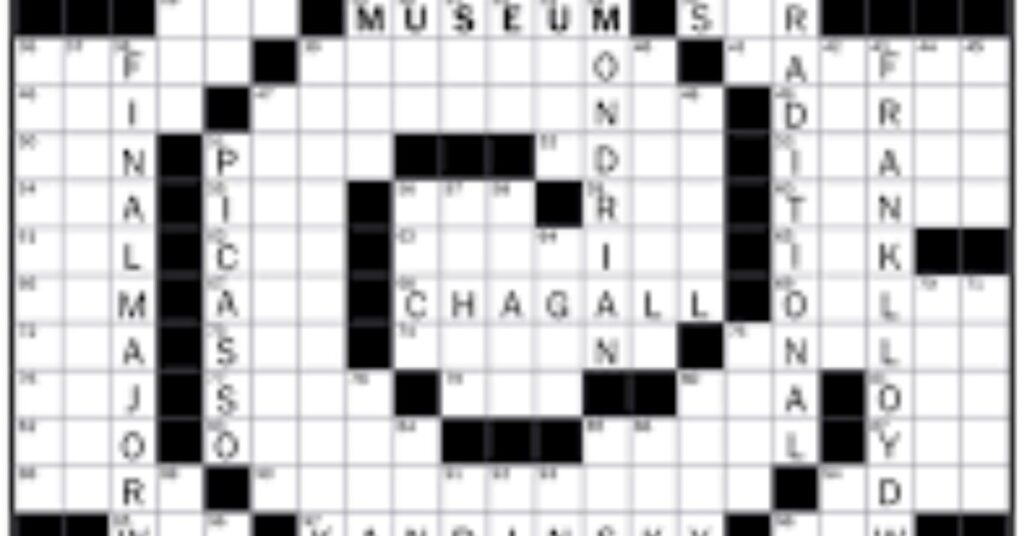The world of crossword puzzles is a fascinating realm where wordplay and lateral thinking combine to create engaging challenges. One such intriguing clue that has recently appeared in the New York Times Mini Crossword is “Door Hinge for Orange Sort Of.” If you’ve found yourself stumped by this particular clue, you’re not alone. In this article, we’ll delve into the answer, explore the intricacies of crossword clues, and understand why “door hinge for orange … sort of” is such a clever play on words.
Understanding the Crossword Clue
“Door Hinge for Orange Sort Of” might initially seem cryptic, but with a bit of lateral thinking, the answer reveals itself. The clue was featured in the NYT Mini Crossword on April 15, 2024, and the answer is RHYME.
Door Hinge for Orange Sort Of The Clue Breakdown
- “Door hinge”: A hinge is a device that allows two parts to pivot or move relative to each other. In crossword terminology, it often signifies a connection or a pivot point.
- “For orange”: Orange is a color, and in the context of crosswords, it can hint at words related to color or even something that sounds like “orange.”
- “… sort of”: This phrase suggests a play on words or a metaphorical interpretation rather than a literal meaning.
The Answer: RHYME
The answer RHYME fits the clue in a clever and somewhat abstract manner:
- RHYME is a linguistic tool that pairs words with similar ending sounds. In this case, “door hinge” acts as a pivot or connection point between words.
- The word “orange” is famously difficult to find a perfect rhyme for. By saying “door hinge for orange,” the clue implies that rhyming is a tool or “hinge” used in language, which can be somewhat of a “sort of” solution to the problem of rhyming with “orange.”
Read Also: RenderWolf AI Transform Game Content with Effortless Asset Creation
Exploring Crossword Clues and Answers
Crossword clues are designed to challenge solvers and stimulate their brains. Here’s a deeper look at how clues like “door hinge for orange … sort of” fit into the crossword puzzle world.
The Structure of Crossword Clues
Crossword clues can be categorized into several types, including:
- Definition Clues: These provide a straightforward definition of the answer. For example, “a red flower” might lead to the answer “rose.”
- Wordplay Clues: These involve puns, anagrams, or other forms of word manipulation. “Door hinge for orange … sort of” is an example of a wordplay clue.
- Cryptic Clues: These are often more complex and involve multiple layers of meaning, including anagrams, homophones, and hidden meanings.
The Role of Wordplay
In crossword puzzles, wordplay is essential for crafting clues that are both challenging and enjoyable. The clue “door hinge for orange … sort of” exemplifies how wordplay can transform a seemingly straightforward question into a puzzle that requires creative thinking.
Historical Context and Usage
The NYT Mini Crossword is known for its clever and concise clues, often incorporating contemporary references or wordplay. The clue “Door Hinge for Orange Sort Of” is a perfect example of how the puzzle creators play with language to engage solvers.
Evolution of Crossword Puzzles
Crossword puzzles have evolved significantly since their inception in the early 20th century. Initially, they were simple grids with straightforward clues. However, as the popularity of crosswords grew, constructors began to experiment with more complex clues and themes.
- Early Crosswords: These were often straightforward, with simple definitions as clues.
- Modern Crosswords: Today’s puzzles, including the NYT Mini Crossword, feature more intricate clues, including wordplay and thematic elements.
The NYT Mini Crossword
The NYT Mini Crossword, introduced in 2014, offers a shorter and often more accessible version of the classic NYT crossword puzzle. It features a 5×5 grid and is designed to be completed quickly, making it perfect for a brief mental exercise.
Conclusion
The clue “Door Hinge for Orange Sort Of” in the NYT Mini Crossword is a testament to the clever and engaging nature of crossword puzzles. By using wordplay and lateral thinking, it transforms a seemingly simple question into a brain-teasing challenge. Whether you’re a seasoned crossword enthusiast or a newcomer, understanding clues like these enhances the enjoyment and satisfaction of solving puzzles.
So next time you encounter a tricky clue, remember the innovative spirit of “door hinge for orange … sort of” and approach it with creativity and curiosity. Happy solving!
FAQs
What does the clue “Door Hinge for Orange Sort Of” mean?
The clue is a play on words. “Door hinge” refers to a connection point, and “for orange” suggests a linguistic or phonetic connection. The answer, “rhyme,” plays on the idea that rhyming is a tool that connects words, similar to how a hinge connects parts.
How can I solve crossword clues that involve wordplay?
To solve wordplay clues, think creatively and consider multiple meanings of the words in the clue. Look for puns, homophones, or other forms of word manipulation that might lead to the answer.
Why is the NYT Mini Crossword different from the full-sized crossword?
The NYT Mini Crossword is shorter, with a 5×5 grid, and is designed to be completed in a few minutes. It typically features more straightforward clues compared to the full-sized crossword, making it a quick and engaging challenge.
Where can I find past NYT Mini Crossword puzzles?
You can find past NYT Mini Crossword puzzles on the New York Times website or through their crossword app. These archives can be useful for practicing and understanding different clue types.
Are there any strategies for solving tricky crossword clues?
Yes, strategies include looking for common crossword answer patterns, breaking down the clue into smaller parts, and considering synonyms or wordplay. Practice and familiarity with different clue types can also improve your solving skills.







